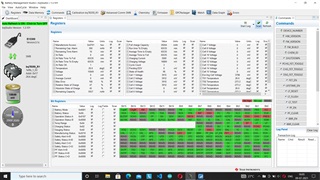Other Parts Discussed in Thread: BQSTUDIO, BQ78350, BQ40Z50-R1, BQ40Z50, , GPCCEDV
Hi,
I have found the exact cell Chem Id on the bqstudio tool still I don't get the accurate SOC. Now I want to know the procedure to be followed to get accurate SOC of battery pack? I have gone through the documentation available at the website ie CEDV parameter calculations and learning cycle. I am confused about which needs to be done first, should we calculate the cedv coefficients first by logging 6 files, or the learning cycle? Also what are the values need to be configured(current parameter, voltage parameter )before doing the CEDV logging (6 files).
Currently I have calibrated the current , changed the cell temperature coefficients as per the thermistor.
Thanks,
Vinay kambappa



